I have a dataframe with two rows and I'd like to merge the two rows to one row. The df Looks as follows:
PC Rating CY Rating PY HT
0 DE101 NaN AA GV
0 DE101 AA+ NaN GV
I have tried to create two seperate dataframes and Combine them with df.merge(df2) without success. The result should be the following
PC Rating CY Rating PY HT
0 DE101 AA+ AA GV
Any ideas? Thanks in advance Could df.update be a possible solution?
EDIT:
df.head(1).combine_first(df.tail(1))
This works for the example above. However, for columns containing numerical values, this approach doesn't yield the desired output, e.g. for
PC Rating CY Rating PY HT MV1 MV2
0 DE101 NaN AA GV 0 20
0 DE101 AA+ NaN GV 10 0
The output should be:
PC Rating CY Rating PY HT MV1 MV2
0 DE101 AA+ AA GV 10 20
The formula above doesn't sum up the values in the last two columns, but takes the values in the first row of the dataframe.
PC Rating CY Rating PY HT MV1 MV2
0 DE101 AA+ AA GV 0 20
How could this problem be fixed?

